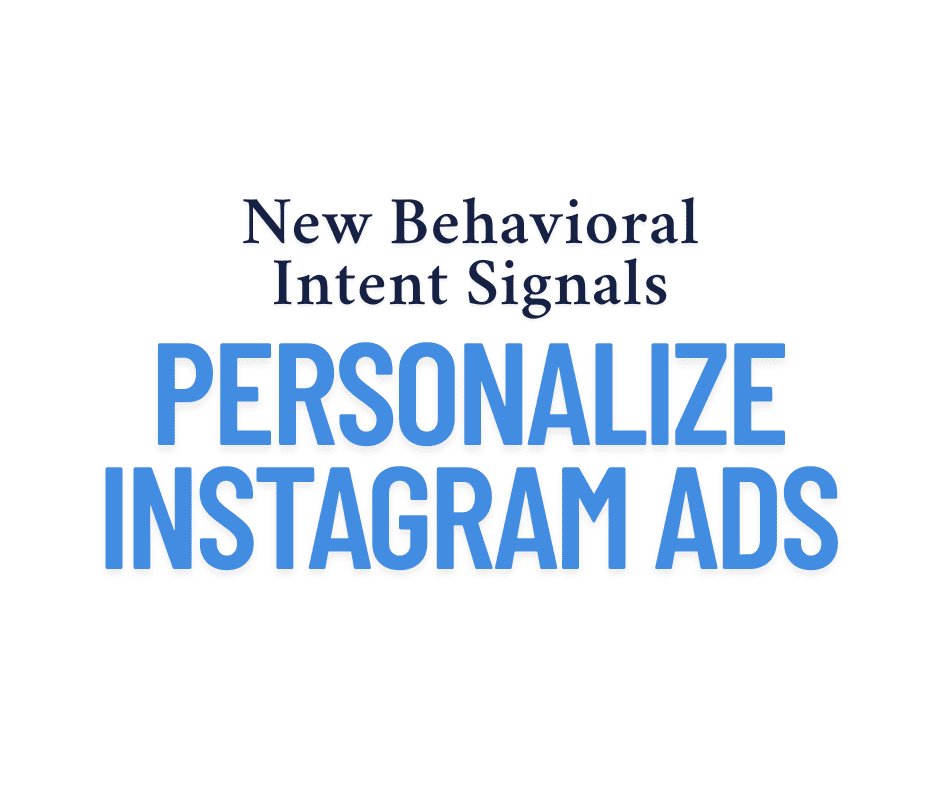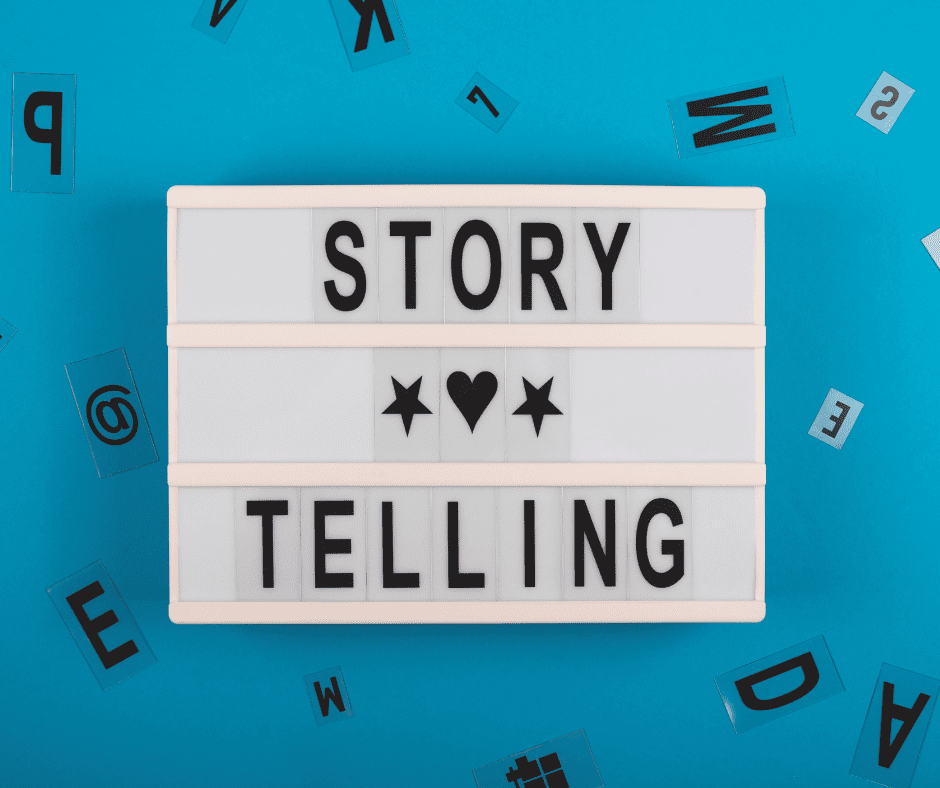Last Updated on April 1, 2025 by Val Razo
In today’s fast-moving B2B marketing landscape, personalization has evolved from a buzzword into a business essential. For marketers looking to deliver ads that speak directly to their target customers, tapping into behavioral intent signals on platforms like Instagram is a powerful strategy. These signals provide real-time insights into customer behavior, allowing brands to tailor content based on purchase intent, user preferences, and stage in the buying journey.
Whether you’re optimizing ad campaigns for higher conversion rates or developing marketing and sales strategies that reach the right audience, intent data can make the difference between a scroll-past and a sale. Especially in the context of B2B marketing, where CRM data, first-party data, and user intent play a larger role, understanding how to leverage these signals on visual platforms like Instagram is critical.
This article breaks down how to personalize Instagram ads using the new behavioral intent signals, helping you better understand types of intent, how data is collected, and how to create dynamic ads that truly resonate with your audience.
Understanding Behavioral Intent Signals and Their Role in Instagram Ads
For marketers aiming to reach their target customer at the right time, behavioral intent signals are game-changers. These signals are subtle cues gathered from user behavior, such as search queries, website interactions, or engagement with content across platforms like Instagram, LinkedIn, and even Google Ads. When tracked and interpreted properly, they offer valuable insights into customer behavior and intent to purchase.
What Are Intent Signals and Types of Intent
Intent signals are typically categorized into two main types: explicit and implicit.
-
Explicit intent includes direct actions like filling out a form, signing up for a webinar, or clicking “get more info” on an Instagram ad — clear signs of a strong intent to act.
-
Implicit intent, on the other hand, comes from patterns like scrolling behavior, time spent on a product page, or repeated views of a specific video or carousel ad. These help marketers interpret subtle patterns that indicate interest.
There are also different types of intent, including:
-
Informational intent (user is researching)
-
Navigational intent (user is looking for a specific page or brand)
-
Transactional or purchase intent (user is ready to buy)
Recognizing where your audience falls in this spectrum helps you serve ads based on intent signals — not assumptions.
A SaaS platform targeting mid-size HR teams used CRM data combined with first-party behavioral data to identify users who downloaded their lead magnet but didn’t book a demo. They created a series of Instagram carousel ads addressing key objections, resulting in a 28% increase in demo bookings over 30 days.
How Behavioral Signals Improve Segmentation and Outreach
Using behavioral segmentation allows you to go beyond basic demographics. Instead of simply targeting “25-34-year-olds in marketing,” you’re now focusing on individuals who’ve shown intent or interest in your product or service — for example, those who have visited your site after engaging with your content marketing on Instagram.
This enables more intelligent outreach, where your ad copy can be customized to address specific pain points or user preferences. Platforms like Facebook and Instagram offer options to build lookalike audiences or retarget users who’ve already interacted with your content — allowing marketers to leverage intent signals for sharper, more relevant messaging.
When paired with first-party data from a CRM or your email lists, you’re also creating a consistent experience across marketing and sales strategies, building a bridge between awareness and conversion.
Personalization Strategies for Instagram Ads
In a digital world overflowing with content, personalized ads are what help your brand stand out. On visual platforms like Instagram, where the competition for attention is fierce, personalization isn’t just a “nice to have” — it’s a strategic necessity. Leveraging real-time data, behavioral insights, and first-party customer inputs allows you to tailor ad experiences for each potential customer, increasing engagement and driving higher conversion rates.
How to Personalize Content for Potential Customers
At its core, personalization is about creating relevant content that aligns with the needs, goals, and behaviors of your audience. Start by tapping into your CRM data and existing customer data to identify browsing patterns, purchase history, and campaign interactions.
Once you understand your user’s journey and intent, you can:
-
Create dynamic ad creatives that change based on user interest
-
Design carousel ads that highlight product features the user has shown interest in
-
Use automation tools to deliver ads to users at the optimal time
-
Match ad copy with real-time behavior and purchase intent
For example, if a user engaged with a post about “boosting ROI with Instagram ads,” your next ad campaign might feature a case study showing how a similar company achieved that goal.
Leveraging Instagram Ads for Smarter Targeting
To truly optimize your Instagram campaigns, use the power of intent data collected via on-platform activity — such as likes, saves, clicks, profile visits, and even story engagement. This data helps you build more accurate segments based on intent signals, rather than relying solely on demographics.
Platforms like Facebook Ads Manager allow you to integrate behavioral segmentation directly into your ad targeting strategy. With real-time tracking, you can prioritize users with strong intent and adjust your content for each funnel stage — from awareness to decision.
Also, don’t ignore the potential of syncing your email marketing and Instagram ads. Triggering personalized Instagram ads after a user clicks a specific email CTA can help build continuity and trust — leading to more effective outreach and better conversion.
With personalization rooted in intent signals, your ads feel more like a helpful suggestion than a cold pitch. And that makes all the difference in today’s attention economy.
According to a 2023 report by Demand Gen Report, B2B campaigns that incorporate intent data and behavioral insights see 2X higher engagement rates compared to campaigns using traditional targeting alone.
B2B Marketing and Instagram: A New Frontier
When people think of B2B marketing, platforms like LinkedIn usually come to mind — and for good reason. But limiting outreach to just one channel means missing out on where decision-makers spend time after hours. With over 2 billion monthly active users, Instagram has become a valuable part of the B2B sales toolkit, offering an opportunity to leverage intent signals and reach potential customers in more engaging ways.
Why B2B Companies Should Use Instagram Ads
Instagram is not just for B2C brands anymore. B2B companies are realizing they can use personalized ads, carousel formats, and dynamic ad content to connect with buyers earlier in the buying journey.
Here’s how Instagram helps support B2B marketing strategies:
-
Showcase your product or service through high-impact visuals
-
Share educational content that builds credibility
-
Use real-time data to push users to the next funnel stage
-
Build a community around your brand by promoting user-generated content
Because many purchase decisions involve multiple stakeholders, Instagram ads give you the chance to influence each layer of the buying committee with relevant, digestible content. And with first-party data from your CRM, you can retarget and reconnect with users across campaigns — increasing touchpoints and boosting conversion rates.
When I first started running Instagram ads for B2B clients, we relied heavily on broad targeting — and our CTR barely scratched 0.8%. Once we began using intent signals like lead magnet downloads and webinar registrations, we narrowed our audience significantly. We served dynamic ads to those already showing interest, and our CTR jumped to 2.6% in just a few weeks — while spending less.
LinkedIn vs. Instagram for B2B Outreach
While LinkedIn is ideal for reaching buyers in a professional setting, Instagram excels in providing contextual relevance and emotional connection. Your sales and marketing teams can coordinate outreach strategies across both platforms — using LinkedIn for direct connection and thought leadership, and Instagram for ads that speak directly to user behavior.
What makes Instagram especially effective for targeting is the combination of behavioral segmentation and visual storytelling. While LinkedIn can tell you a user’s job title, Instagram shows you what they care about. Together, they create a powerful B2B ecosystem.
A strong multichannel strategy doesn’t force a choice between platforms — it blends them. And in doing so, you create a seamless, personalized experience that drives B2B sales more efficiently.
Boosting Conversions Through Content Marketing
Whether you’re selling a product or service, your success hinges on how well your content marketing connects with the right audience. For B2B marketers, that means more than just pushing out posts — it’s about creating content that reflects user behavior, addresses intent, and guides prospects toward action. On Instagram, that requires blending creative assets with intent data and strategy to deliver ads based on real-time insights.
A 2023 Forrester Consulting study found that 65% of B2B marketers reported improved ROI after implementing intent data into their ad strategy — especially when integrated with CRM and social platforms.
Creating Video Ads That Convert
Video is one of the most powerful content formats for personalized ads, especially when you’re trying to capture behavioral intent signals. Whether it’s a 15-second story, a product explainer, or a testimonial-style video, the goal is to create video ads that mirror what your target customer is already engaging with.
Here are a few tactics:
-
Tailor your message based on previous ad interactions or site visits
-
Use first-party data to showcase relevant features or use cases
-
Highlight purchase intent signals — like comparison shopping or pricing inquiries
-
Add CTA overlays and retarget based on strong intent behaviors
The result? Video content that feels custom-made, encouraging users to slow their scroll and click through.
A B2B cybersecurity firm built a segmentation strategy based on user clicks from industry-specific blog posts. By using that real-time data, they launched tailored video ads on Instagram that spoke to IT managers’ concerns — boosting click-through rates by over 40% compared to generalized messaging.
Using Email Marketing to Support Instagram Campaigns
Pairing email marketing with Instagram ads is a smart move for B2B sales teams looking to nurture leads and increase conversion rates. For instance, a lead who’s engaged with an Instagram carousel ad could receive a follow-up email with a related case study or demo offer — reinforcing value and improving recall.
Here’s how to sync the two:
-
Use your CRM data to trigger Instagram retargeting ads post-email engagement
-
Personalize your emails using the same keywords and intent-based language used in your ads
-
Segment by user preferences or behavior and adjust both emails and ads accordingly
By connecting these channels, you’re not just reaching prospects more often — you’re reaching them more meaningfully. That layered experience helps build trust, support marketing and sales alignment, and ultimately deliver better ROI on both fronts.
In one campaign, we segmented Instagram ads by job title using LinkedIn behavior data — showing marketing-specific messages to CMOs and tech-heavy value props to CTOs. The ad copy resonated better, the bounce rate dropped by 21%, and average view time increased by over 30 seconds. Personalization, especially for niche B2B roles, made a huge difference.
Conclusion: Unlocking the Power of Intent in Instagram Ad Campaigns
Personalizing your Instagram ads using behavioral intent signals isn’t just a marketing trend — it’s a long-term advantage in the ever-evolving B2B landscape. By focusing on user intent, leveraging real-time data, and aligning your efforts across platforms like Instagram, LinkedIn, and email, you position your brand to resonate with the right audience at exactly the right time.
From smarter segmentation to more effective content marketing, every tactic explored in this guide is designed to move your potential customers through the buying journey with relevance, precision, and trust. As sales and marketing teams collaborate using first-party data and CRM insights, the future of B2B outreach will rely less on volume and more on clarity — reaching not just more leads, but better ones.
In the end, it’s not just about serving ads — it’s about serving ads based on intent that feel timely, personal, and valuable. And that’s how today’s campaigns become tomorrow’s conversions.
Frequently Asked Questions
How does intent data help improve customer experience in B2B marketing?
Intent data helps businesses understand what prospects care about before a conversation even starts. By interpreting intent signals early in the buying journey, B2B marketers can create personalized touchpoints that improve the customer experience — from the first ad to final onboarding. This ensures messaging feels helpful rather than intrusive.
What types of content work best when using B2B intent data?
The most effective types of content are those that align with user behavior and pain points. This includes solution-focused video ads, decision-stage case studies, and interactive carousel ads that speak to known interests. When powered by B2B intent data, your content becomes a tool that supports — not interrupts — the sales process.
How can marketers capture these signals across different platforms?
To capture these signals, marketers need a mix of first-party data, analytics, and integrated tracking across platforms like LinkedIn, Instagram, and CRM tools. Monitoring data points across different touchpoints — such as ad clicks, email opens, and time-on-page — gives a fuller picture of buyer intent.
What are the best data collection methods for building intent-driven ads?
The best data collection methods include using lead forms, tracking on-site behaviors, analyzing email interaction, and syncing with purchase data from your CRM. Collecting and organizing this information allows marketers to build intent-driven campaigns that are both timely and hyper-relevant.
How do intent signals allow marketers to create better ads?
Intent signals allow marketers to tailor both creative and messaging based on real behaviors. An ad could highlight specific features a user showed interest in, or offer a demo to someone who visited your pricing page. By interpreting these signals, you’re no longer guessing what the audience wants — you’re responding to what they’ve already told you through their actions.
Author Bio
Val Razo
Val Razo is a skilled professional in the field of Instagram Marketing. With over five years of experience as a freelance Social Media Marketing consultant, Val has assisted numerous small and medium-sized businesses in achieving their goals.




